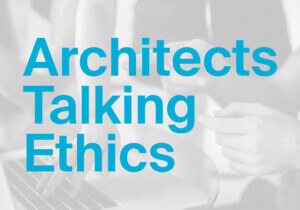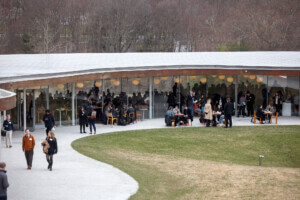While the COVID-19 crisis devastated industries and left millions unemployed, freelancing accelerated, presumably due to displaced workers seeking a new source of income. A study released in September by Upwork found that more than one-third (36 percent) of the U.S. workforce earned income through freelancing during the crisis, an increase of 8 percentage points over the company’s 2019 study’s results.
Freelancing is at the heart of the new gig economy, but does it work in architecture? The answer is yes, but with the caveat that it requires good planning, solid project management, and the right situation.
“You have to clearly define the scope of work for them,” said Michael Ross president of the 18-person, California-based RossDrulisCusenbery Architecture, Inc (RDC). “Have a kickoff meeting with the freelancer and the team so that everyone understands the parameters of the project. Team onboarding is crucial, and you need to give the full background to the freelancer so they understand, in context, the project, and their role. That way everyone is pulling in the same direction.”
Ross says they use freelancers to augment an existing team based on the available skills of that team. “We’ve used freelancers to convert AutoCAD drawings to Revit (building information modeling software), to assist the office in completing construction drawings and to model topographical 3D maps for us. Some of our projects require more experience on the front end, in schematics or design development, and others require more input on the technical side.”
Ross, whose firm focuses primarily in the justice, public safety, and community-based building markets, says it is preferable if the freelancers—who could be in Europe, Asia, or some other U.S. time zone—have at least a couple of hours of overlap with his staff, so that project coordination can be addressed immediately. Otherwise, it doesn’t matter to him if the freelancer is in Rome, Italy, or Rome, New York.
“We have found freelance designers and architects particularly useful when the freelancer was in a different time zone. I like the idea of our projects being worked on around the clock,” he adds.
Freelancers also need fixed, realistic parameters and deadlines added Ross. “We’ve never had a problem using freelancers. If we tell them we need the drawing in five days, it shows up in five days, as long as we’re accurate and honest about our expectations.”
Bridging the Full-Time Employee Gap
Others who use freelancers do so as a way to bridge the gap when project demands are higher than the existing staff can handle, but are not yet abundant enough to justify a full-time hire. Kyle Brunel was the sole employee of Pencil Box Architects, Inc. until January 2020 when Fumiko Docker joined her. Prior to doubling the size of the firm, Brunel used freelance help when the workload became too much for her to handle alone.
“[Freelancers] really helped me get through some tight spots,” says Brunel, who is based in San Francisco, but who maintains an office in her native Massachusetts. “In my position, it’s difficult to turn down work, so there are fits and starts and waves. Some months are busier than others. There have been points where a project would come in and I was at or near maximum capacity, but it wouldn’t have been responsible to hire someone else because there wasn’t enough steady work to justify it.”
Since Docker joined the firm, and the COVID-19 crisis has ravaged many industries, Pencil Box has been able to handle its workload in-house. However, Brunel sees opportunities on the horizon that may call for the firm to need a freelancer bridge to the third full-time employee.
Hope Proctor, the sole proprietor of Proctor Architects, LLC, initially tried to bridge that same gap by hiring part-time employees to work in her office. She found, however, that a strong freelancer is preferable because of the increased flexibility that it provides her.
“With a part-time employee, I have to be in the office to manage them and make sure everything is okay,” said Proctor, whose Connecticut-based firm focuses on coastal residential properties as well as small commercial and institutional projects. “When a freelancer is working remotely on a project for me, if I need to run out, I can, and I know the work is still getting done. I’m not constantly running back to the office.”
Working Effectively with Freelancers
When considering whether a freelancer is a good option to help balance demand and project resources, it is important to be realistic about what a freelancer can contribute. “They definitely provide value, but you have to recognize that they are not going to do your design for you,” says Brunel. “You have to own that portion of the project, as well as the municipal coordination, client coordination and the intimacies of project management that you can only learn by directly coordinating with the municipalities and clients. You can’t just send a freelancer a napkin sketch and say, ‘Do this.’”
Typically, the freelancer’s value lies in the time it saves the principal architect or their team.
“No matter how good and hardworking they are, they’re only as good as the information you give them,” adds Brunel, who offers reference points to freelancers, such as examples from a previous successful project or a design template. “They’re not going to reinvent the wheel for you, and they can’t read your mind, nor are they aware of the nuances of the conversations you’ve had with your client. Their biggest value is providing you a quality and depth of drawing that you don’t have time to do yourself.”
Brunel says she also tries to be available to answer questions and deliver data when necessary. She is not as fond of freelancers who are halfway across the world because she prefers to have more frequent communication with them than others may want or need. “Considering the time difference and that you’re usually connecting by phone, it’s important to put as much in writing as you can. It’s a lot easier to make mistakes if it’s not in writing.”
Other Benefits and Drawbacks
Freelance help can come from several sources. This ranges from generalist online “matchmaking” sites that provide a seemingly endless supply of freelancers across many professions and industries, to closely managed companies dedicated exclusively to A/E firms. Freelance service providers can also flip the process, helping temporarily overstaffed firms to avoid layoffs by finding work for their people in other companies.
With firms cutting back due to the COVID crisis, freelancing is becoming a viable source of income for furloughed architects, designers, and drafters. Even prior to the sudden economic dip, many chose to freelance because its flexibility is a better fit for their lifestyle. Some have family responsibilities during normal work hours, while others simply like the freedom of not being tied to one firm. This is architecture in the gig economy.
Many freelancers in architecture are younger designers who may offset their lack of experience and expertise with a better grasp of technology. “I had a freelancer show me commands in pdf files that I never knew existed,” said Hope Proctor. “We want our projects in Revit, and using freelancers has helped push me toward using it more. When the freelancers are putting it together in Revit, it can force you out of your comfort zone.”
Proctor says she has had great success with international freelancers secured through a company dedicated to providing freelance architects, but like Brunel, she also prefers having them available for a larger part of the workday. Lack of immediacy can be a minor annoyance. “You can’t just walk over to someone and say, “Hey, can you quickly make these revisions for me and print them out,” she says. “You don’t have anyone right there to do it immediately.”
Freelancers can also lack institutional knowledge. “If they don’t understand the way you want the drawing done, and you explain it to them, a person in the office will know what to do the next time. If you explain it once, then get a different freelancer the next time, you have to explain it all over again,” added Proctor, who—partly for this reason—has used the same freelancer the last few times she needed one.
Ross notes that his project managers, while appreciative of the additional resources, sometimes need to be sold on freelancers and the changes to workflow that they demand. “PMs believe it takes more of their management time to bring someone up to speed, so the PM has to become adept at utilizing this unique resource,” he said.
For Brunel, working with freelancers has made her a better manager. “It has always been difficult for me to delegate,” she said. “Having a remote person forces me to create instructional tools and systems in the context of the architectural documentation we produce. This way, it is all more universally understood.”
Ross added that freelancers are part of his firm’s strategic business approach. “I really believe that a well-managed architectural practice needs to have a complete toolkit. Using freelancers is part of that. Knowing when to utilize the service is critical, and for us, it has been a successful tool.”
Marc Arnold, AIA, is a former operations director with three of the largest A/E firms in the country and is currently an operations consultant and president/founder of Studio-Desk On-Demand, Inc., a provider of freelance staff and services exclusively to the A/E industry.











